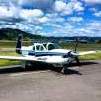-
Posts
5,852 -
Joined
-
Last visited
-
Days Won
29

Ragsf15e replied to BlueSky247's topic in Miscellaneous Aviation Talk

Ragsf15e replied to BlueSky247's topic in Miscellaneous Aviation Talk

Ragsf15e replied to BlueSky247's topic in Miscellaneous Aviation Talk

Ragsf15e replied to gevertex's topic in Aircraft Classifieds

Ragsf15e replied to PeytonM's topic in Engine Monitor Discussion

Ragsf15e replied to Subternal's topic in General Mooney Talk

Ragsf15e replied to PeytonM's topic in Engine Monitor Discussion

Ragsf15e replied to shawnd's topic in Modern Mooney Discussion

Ragsf15e replied to shawnd's topic in Modern Mooney Discussion

Ragsf15e replied to Trogdor's topic in General Mooney Talk

Ragsf15e replied to midlifeflyer's topic in General Mooney Talk

Ragsf15e replied to midlifeflyer's topic in General Mooney Talk

Ragsf15e replied to Mooney-Shiner's topic in Vintage Mooneys (pre-J models)
We have placed cookies on your device to help make this website better. You can adjust your cookie settings, otherwise we'll assume you're okay to continue.